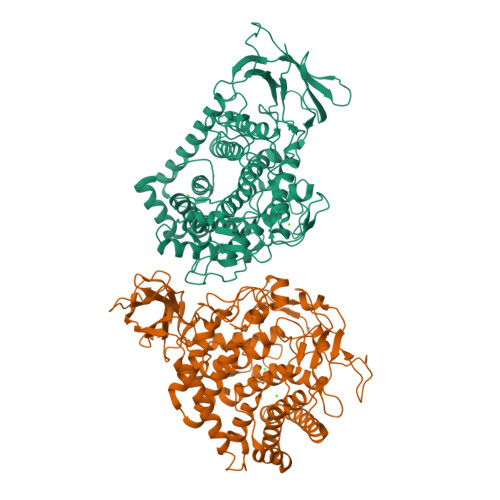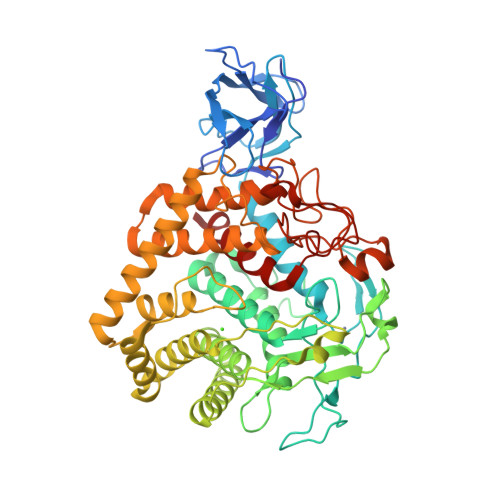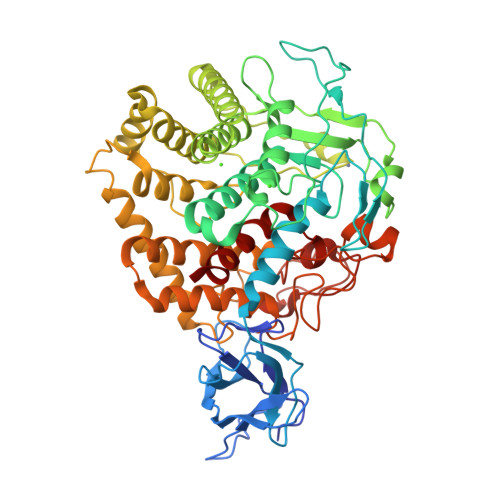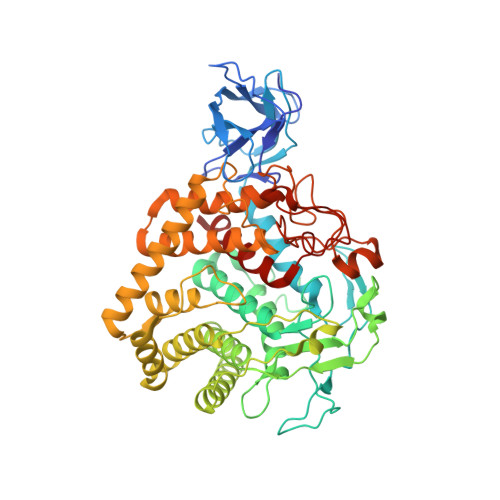Structure, activity, and stability of metagenome-derived glycoside hydrolase family 9 endoglucanase with an N-terminal Ig-like domain.
Okano, H., Kanaya, E., Ozaki, M., Angkawidjaja, C., Kanaya, S.(2015) Protein Sci 24: 408-419
- PubMed: 25545469
- DOI: https://doi.org/10.1002/pro.2632
- Primary Citation of Related Structures:
3X17 - PubMed Abstract:
A metagenome-derived glycoside hydrolase family 9 enzyme with an N-terminal immunoglobulin-like (Ig-like) domain, leaf-branch compost (LC)-CelG, was characterized and its crystal structure was determined. LC-CelG did not hydrolyze p-nitrophenyl cellobioside but hydrolyzed CM-cellulose, indicating that it is endoglucanase. LC-CelG exhibited the highest activity at 70°C and >80% of the maximal activity at a broad pH range of 5-9. Its denaturation temperature was 81.4°C, indicating that LC-CelG is a thermostable enzyme. The structure of LC-CelG resembles those of CelD from Clostridium thermocellum (CtCelD), Cel9A from Alicyclobacillus acidocaldarius (AaCel9A), and cellobiohydrolase CbhA from C. thermocellum (CtCbhA), which show relatively low (29-31%) amino acid sequence identities to LC-CelG. Three acidic active site residues are conserved as Asp194, Asp197, and Glu558 in LC-CelG. Ten of the thirteen residues that form the substrate binding pocket of AaCel9A are conserved in LC-CelG. Removal of the Ig-like domain reduced the activity and stability of LC-CelG by 100-fold and 6.3°C, respectively. Removal of the Gln40- and Asp99-mediated interactions between the Ig-like and catalytic domains destabilized LC-CelG by 5.0°C without significantly affecting its activity. These results suggest that the Ig-like domain contributes to the stabilization of LC-CelG mainly due to the Gln40- and Asp99-mediated interactions. Because the LC-CelG derivative lacking the Ig-like domain accumulated in Escherichia coli cells mostly in an insoluble form and this derivative accumulated in a soluble form exhibited very weak activity, the Ig-like domain may be required to make the conformation of the active site functional and prevent aggregation of the catalytic domain.
Organizational Affiliation:
Department of Material and Life Science, Graduate School of Engineering, Osaka University, 2-1 Yamadaoka, Suita, Osaka, 565-0871, Japan.





















